rosmarinus officinalis
(This dyeing was made mid-March 2011, I'm trying to catch up with my dyeing reports here, scroll to the previous post for the eldest of my most recent posts/dyeings)
I used rosemary, also known in latin as Rosmarinus officinalis. It grows wild abundantly here so it made a particularly good subject for my own experiments with not endangered, local & abundantly (if possible) growing species.
Flowering, very common in a mature and healthy specimen, blooms in summer in the north; but can be everblooming in warm-winter climates and is variable in color, being white, pink, purple, or blue. Since it is attractive and tolerates some degree of drought, it is also used in landscaping, especially in areas having a Mediterranean climate.
Rosemary has a very old reputation for improving memory, and has been used as a symbol for remembrance (during weddings, war commemorations and funerals) in Europe and Australia. Mourners would throw it into graves as a symbol of remembrance for the dead. In Shakespeare's Hamlet, Ophelia says, "There's rosemary, that's for remembrance." (Hamlet, iv. 5.) One modern study lends some credence to this reputation.
In the Middle Ages, rosemary was associated with wedding ceremonies - the bride would wear a rosemary headpiece and the groom and wedding guests would all wear a sprig of rosemary, and from this association with weddings rosemary evolved into a love charm. Newly wed couples would plant a branch of rosemary on their wedding day. If the branch grew it was a good omen for the union and family.
Rosemary was also stuffed into poppets (cloth dolls) in order to attract a lover or attract curative vibrations for illness. It was believed that placing a sprig of rosemary under a pillow before sleep would repel nightmares.
Potential side effects : Recent European research has shown that rosemary interferes with the absorption of iron in the diet, which indicates that it should not be used internally by persons with iron deficiency anemia.
Rosemary in culinary or therapeutic doses is generally safe. Rosemary essential oil may have epileptogenic properties, as a handful of case reports over the past century have linked its use with seizures in otherwise healthy adults or children. Rosemary essential oil is potentially toxic if ingested. Large quantities of rosemary leaves can cause adverse reactions, such as coma, spasm, vomiting, and pulmonary edema (fluid in the lungs) that can be fatal. Avoid consuming large quantities of rosemary especially if pregnant or breastfeeding.
I used rosemary, also known in latin as Rosmarinus officinalis. It grows wild abundantly here so it made a particularly good subject for my own experiments with not endangered, local & abundantly (if possible) growing species.
botanical print (in the public domain now) by Franz Eugen Köhler, Köhler's Medizinal-Pflanzen
Rosemary (Rosmarinus officinalis) is a woody, perennial herb with fragrant evergreen needle-like leaves. It is native to the Mediterranean region. It is a member of the mint family Lamiaceae, which also includes many other herbs.
The name rosemary derives from the Latin name rosmarinus, which is from "dew" (ros) and "sea" (marinus), or "dew of the sea" because in many locations it needs no other water than the humidity carried by the sea breeze to live.Flowering, very common in a mature and healthy specimen, blooms in summer in the north; but can be everblooming in warm-winter climates and is variable in color, being white, pink, purple, or blue. Since it is attractive and tolerates some degree of drought, it is also used in landscaping, especially in areas having a Mediterranean climate.
Rosemary has a very old reputation for improving memory, and has been used as a symbol for remembrance (during weddings, war commemorations and funerals) in Europe and Australia. Mourners would throw it into graves as a symbol of remembrance for the dead. In Shakespeare's Hamlet, Ophelia says, "There's rosemary, that's for remembrance." (Hamlet, iv. 5.) One modern study lends some credence to this reputation.
In the Middle Ages, rosemary was associated with wedding ceremonies - the bride would wear a rosemary headpiece and the groom and wedding guests would all wear a sprig of rosemary, and from this association with weddings rosemary evolved into a love charm. Newly wed couples would plant a branch of rosemary on their wedding day. If the branch grew it was a good omen for the union and family.
Rosemary was also stuffed into poppets (cloth dolls) in order to attract a lover or attract curative vibrations for illness. It was believed that placing a sprig of rosemary under a pillow before sleep would repel nightmares.
Potential side effects : Recent European research has shown that rosemary interferes with the absorption of iron in the diet, which indicates that it should not be used internally by persons with iron deficiency anemia.
Rosemary in culinary or therapeutic doses is generally safe. Rosemary essential oil may have epileptogenic properties, as a handful of case reports over the past century have linked its use with seizures in otherwise healthy adults or children. Rosemary essential oil is potentially toxic if ingested. Large quantities of rosemary leaves can cause adverse reactions, such as coma, spasm, vomiting, and pulmonary edema (fluid in the lungs) that can be fatal. Avoid consuming large quantities of rosemary especially if pregnant or breastfeeding.
I removed all the leaves from the stems (yes, that took me long), and put them into two glass jars (big ones, but they were not big enough for putting it all in one only) with water, and let them soak for a good couple of days, sometimes I would put them on the heaters.
And then, I poured the content of the two jars in the pot, and carefully very gently simmered them. Then I drained the leaves, and added my fibers in the yellow dyebath & let them simmered them too, very very gently, I was really carefully this time to not let the heat get too high. I haven't overheated & I think it was for the best.
So here are the results of the hot dyeing with rosemary, and as usual, all fibers were premordanted with alum.
Nice, right ?? I was pleasantly surprised.
I also did something else on Sunday afternoon. I tried to naturally tie and dye for the first time ! I used an onion exhausted dyebath from last December, that I had saved carefully & kept in the fridge for a future use. It hadn't changed at all & I was pretty happy about that. So I took two pieces of fabrics, one in silk, one in linen, and tried to make a simple pattern with rubberbands. (I think now that these rubberbands were too thick, and that I shouldn't have used linen neither, which was, according to me, too thick too, for this kind of experiments ... nevermind, lesson learnt)
so this is the piece of silk :
As the piece of linen didn't come out as good as I had hoped for, I decided to overdye it by throwing it in the rosemary hot dyeing that was going on. And this is how it came :
I really enjoyed the process & the result, and it really makes me feel to go buy organic cotton teeshirts for the four of us, and premordant them with soy milk, for as long as I can wait, and then try to tie-and-dye them with plants.
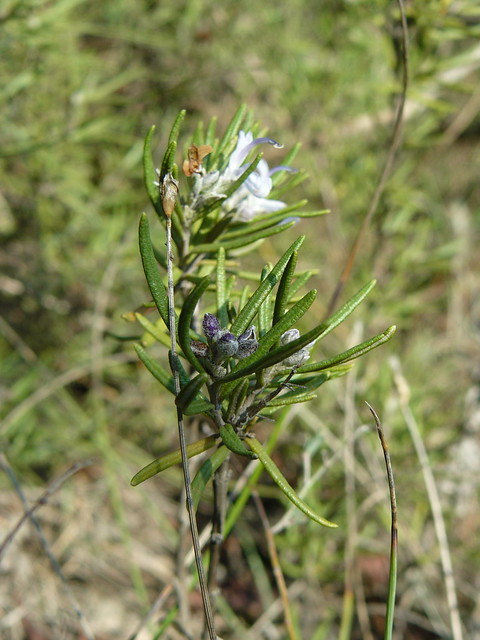
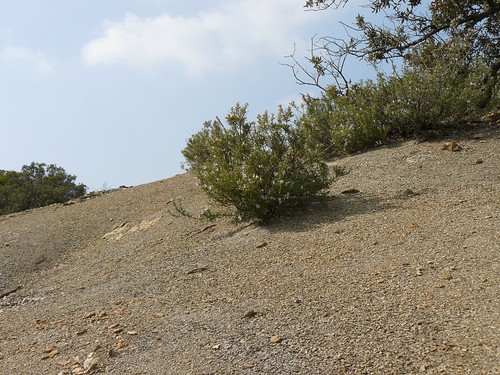

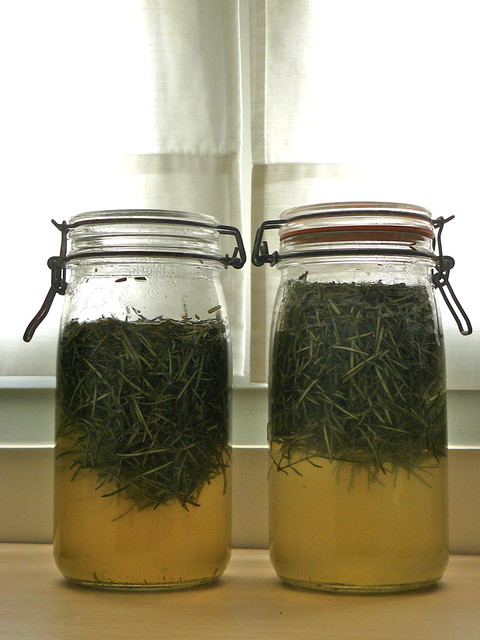
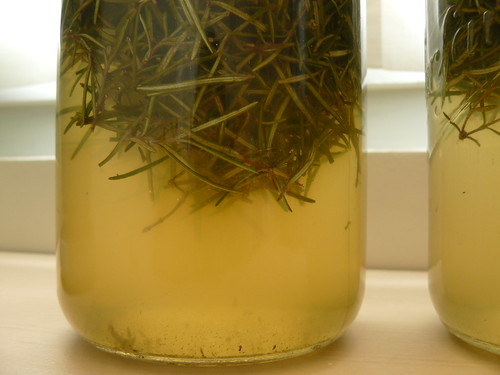
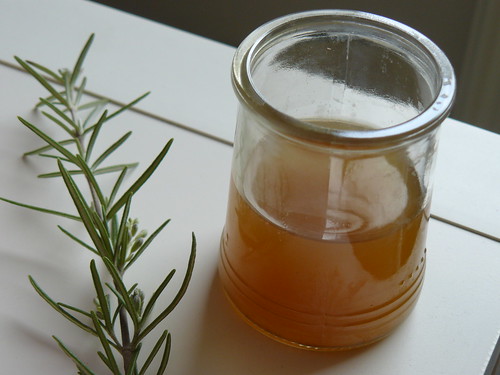

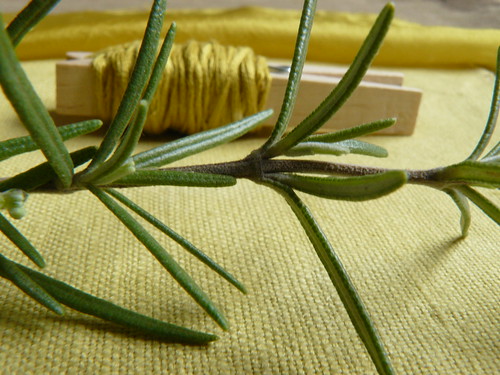
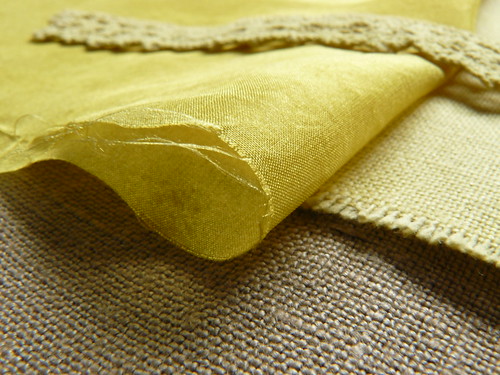
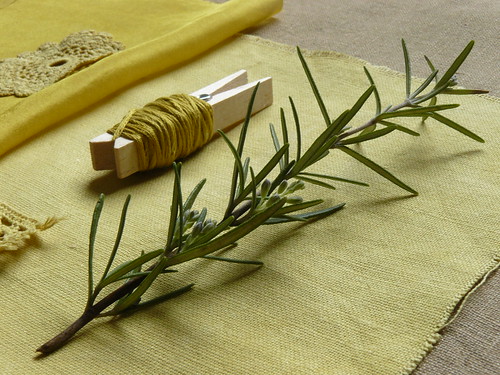
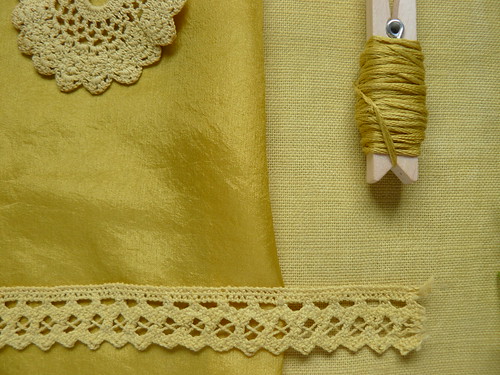
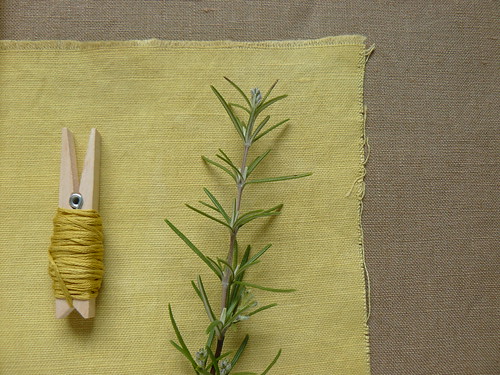
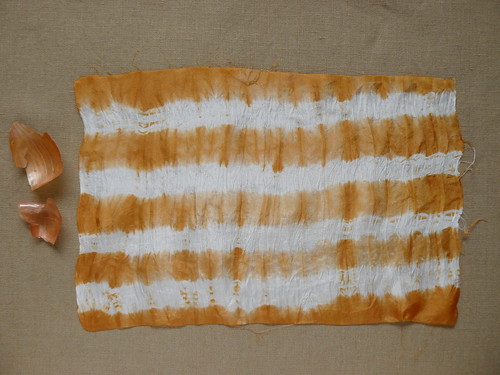
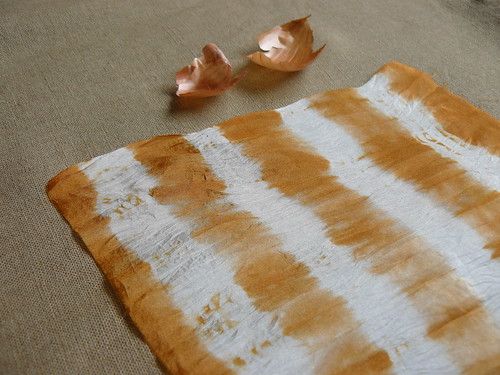
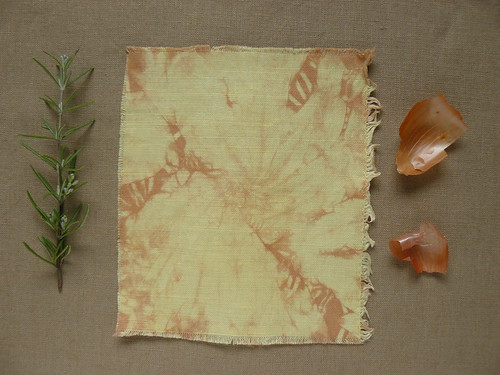
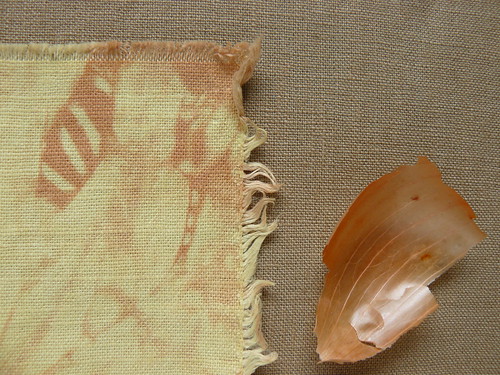
i wish rosemary grew wild in canada
ReplyDeleteHave you tried using an iron mordant? On silk it's the most beautiful grey green!
ReplyDelete